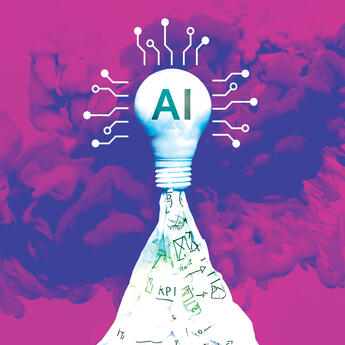Credit: thinkhubstudio / Shutterstock
Automation may be possible — but when will businesses want to do it?
By
The emergence of generative artificial intelligence has companies scrambling to define AI strategy and find use cases as workers fret that automation is coming for their jobs.
But while AI job displacement will likely be substantial in the long run, the roll out will be gradual. A new working paper, “Beyond AI Exposure: Which Tasks Are Cost-Effective to Automate With Computer Vision,” found that while AI will likely change labor patterns, predictions of rapid, widespread automation do not consider a slow adoption curve and the technical feasibility and economic attractiveness of building AI systems to do a specific job.
Researchers Neil Thompson, Maja S. Svanberg, and Wensu Li of MIT; Martin Fleming of The Productivity Institute; and Brian Goehring of IBM created a new AI task automation model to more accurately predict the pace of automation. Looking specifically at computer vision, they found that technical and cost barriers could leave about three-quarters of jobs unchanged in the near term.
“Our work highlights the importance of moving beyond ‘AI exposure,’ which looks at technologically what might be automated, to accounting for the economics of the adoption decision to know what is attractive to automate,” said Thompson, a research scientist at MIT Sloan and the MIT Computer Science and Artificial Intelligence Laboratory. “It is important to split apart the impact of AI on job automation from job augmentation, which is likely to have much different effects on the economy.”
A new model to predict AI automation
While previous automation studies have measured the overall potential for AI to affect a particular area or job, the researchers created a model to look at when AI adoption is economically attractive, based on the following:
- The level of performance required for an automated system to complete a particular task, based on surveys of workers familiar with the task.
- The technical considerations of actually building an AI system capable of that performance.
- The economic factors involved in building and deploying such a system.
The model looked specifically at computer vision applications, where cost modeling is more developed. The researchers found that at today’s costs, only 23% of worker wages associated with vision tasks would actually be attractive to automate. This means U.S. businesses would likely opt out of automating most vision tasks that lend themselves to AI.
To illustrate how the model works, the researchers used the example of a small bakery deciding whether to automate with computer vision. Bakers visually check ingredients for quality, a task that could be replaced by a computer vision system able to detect when food has gone bad.

AI Executive Academy
In person at MIT Sloan
Register Now
Based on data from the Bureau of Labor Statistics, bakers spend about 6% of their time checking food quality. That means a small bakery with five bakers making a typical salary of $48,000 each is looking at a potential labor savings of $14,000 a year to automate that one task. “This amount is far less than the cost of developing, deploying, and maintaining a computer vision system,” the researchers write. “We would conclude that it is not economical to substitute human labor with an AI system at this bakery.”
Many tasks are simply not attractive to automate because the AI systems required to do them would be far too costly to build to ensure a proper return on investment, Thompson said, and there typically aren’t enough workers doing a task to justify the cost of creating and deploying a system for automation.
The researchers also noted that most evaluations of AI’s impact mix together full task automation, which is more likely to displace workers, and partial automation, which will likely improve worker productivity.
Other key findings from the research
Expect an adoption curve. Large companies are more likely to be interested in and ultimately deploy AI systems than smaller companies with more limited resources. However, the slow rollout of AI could be accelerated if costs for systems decline or if applications are deployed using AI-as-a-service platforms, which deliver greater scale.
There are challenges with the AI-as-a-service approach, however. It will require industry collaboration and policy initiatives to promote data sharing across companies, and it will also demand major industry and organizational recalibration if tasks are parceled out and handed off to third-party providers.
Related Articles
AI automation probably won’t outpace existing job automation. Automation has already come for workers’ jobs, and it is unclear whether adding AI to the mix will substantially alter the number of jobs lost, the researchers found. A large part of AI task automation will be channeled to areas where traditional automation is already happening. “Hence the two types will substitute for each other, at least in part, and the net effect will be less than the sum of each,” the researchers write.
The researchers also found that after an initial spike, job loss from computer vision will likely be smaller than the existing job churn seen in the market.
Gradual adoption allows time for intervention. A slow adoption curve creates time to institute new policies or employee retraining programs that address the impact of automation on workers.
“Our results point to a notably different path for AI automation than previously explored in the literature — one where the pace is more in-line with traditional job churn and more amenable to traditional policy interventions, and where the cost-effectiveness of systems is crucial to determining their spread,” the researchers write.
Read the paper: Beyond AI Exposure




